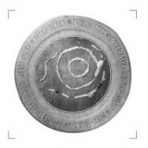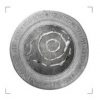An analysis was carried out on the cartographic documentation produced between 16th and 19th centuries concurrently with the excavation drive in Carlappiano (Piombino) and Vetricella (Scarlino) concerning the coastal area between Piombino, Follonica and Val di Pecora.
The most reliable documentation on the topic includes large scale spatial representations its topographical contents (settlements, road network, hydro-morphological structure) providing a clear outlook on the environmental and economical situation subsequently giving a wider view of the evolutionary processesleading to the development of the studied area.
In other words historic cartography suggests the use of soil and agricultural, pastoral, aquatic resources as, for example, the “salt pan”, the presence of which was proved to be near Carlappiano mid XVI century (Fig.1: ASFI, Piante dei Ponti e Strade, c. 68: Carta del golfo di Piombino e Follonica tra Granducato di Toscana e Principato di Piombino). Historic cartography also evidences the various land managements carried out in time (Fig.2), as for example drainage operations enabling the recovery and agricultural colonization of vast swamp areas.
The written documentation accompanying the cartographic one gives a valuable contribution to better study the topic.




